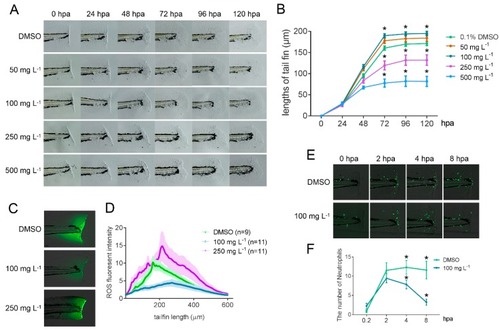- Title
-
Solid Matrix-Supported Supercritical CO₂ Enhances Extraction of γ-Linolenic Acid from the Cyanobacterium Arthrospira (Spirulina) platensis and Bioactivity Evaluation of the Molecule in Zebrafish
- Authors
- Yang, X., Li, Y., Li, Y., Ye, D., Yuan, L., Sun, Y., Han, D., Hu, Q.
- Source
- Full text @ Mar. Drugs
|
Bioactivities of GLA tested on a zebrafish caudal fin regeneration model. ( |

